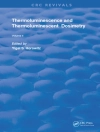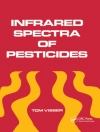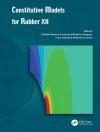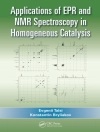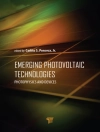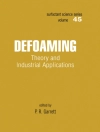Modeling and Simulation of Catalytic Reactors for Petroleum
Refining deals with fundamental descriptions of the main
conversion processes employed in the petroleum refining industry:
catalytic hydrotreating, catalytic reforming, and fluid catalytic
cracking. Common approaches for modeling of catalytic reactors for
steady-state and dynamic simulations are also described and
analyzed. Aspects such as thermodynamics, reaction kinetics,
process variables, process scheme, and reactor design are discussed
in detail from both research and commercial points of view.
Results of simulation with the developed models are compared with
those determined at pilot plant scale as well as commercial
practice. Kinetics data used in the reactor model are either taken
from the literature or obtained under controlled experiments at the
laboratory.
Cuprins
PREFACE.
ABOUT THE AUTHOR.
1 Petroleum Refining.
1.1 Properties of Petroleum.
1.2 Assay of Crude Oils.
1.3 Separation Processes.
1.4 Upgrading of Distillates.
1.5 Upgrading of Heavy Feeds.
2 Reactor Modeling in Petroleum Refining Industry.
2.1 Description of Reactors.
2.2 Deviation from an Ideal Flow Pattern.
2.3 Kinetic Modeling Approaches.
2.4 Reactor Modeling.
3. Modeling of Catalytic Hydrotreating.
3.1 The Hydrotreating Process.
3.2 Fundamentals of Hydrotreating.
3.3 Reactor Modeling.
4. Modeling of Catalytic Reforming.
4.1 The Catalytic Reforming Process.
4.2 Fundamentals of Catalytic Reforming.
4.3 Reactor Modeling.
5. Modelling and Simulation of the Fluidised-Bed Catalytic
Cracking Converter (Rafael Maya-Yescas).
5.1 Introduction.
5.2 Reaction Mechanism of Catalytic Cracking.
5.3 Simulation to Estimate Kinetic Parameters.
5.4 Simulation to Find Controlling Reaction Steps During
Catalytic Cracking.
5.5 Simulation of Steady Operation of the Riser Reactor.
5.6 Simulation to Scale-Up Kinetic Factors.
5.7 Simulation of the Regenerator Reactor.
5.8 Modelling of the Catalyst Stripper.
5.9 Simulation of the Controlled FCC Unit.
5.10 Technological Improvements and Modifications.
5.11 Conclusions.
INDEX.
Despre autor
JORGE ANCHEYTA, Ph D, is a research and development project leader at the Mexican Petroleum Institute (IMP) and professor at the National Polytechnic Institute of Mexico. Dr. Ancheyta has been awarded the Highest Level (III) National Researcher Distinction by the Mexican government and is a member of the Mexican Academy of Science. He has also served as a guest editor of various international journals including Catalysis Today, Petroleum Science and Technology, Industrial & Engineering Chemistry Research, Energy & Fuels, and Fuel.


